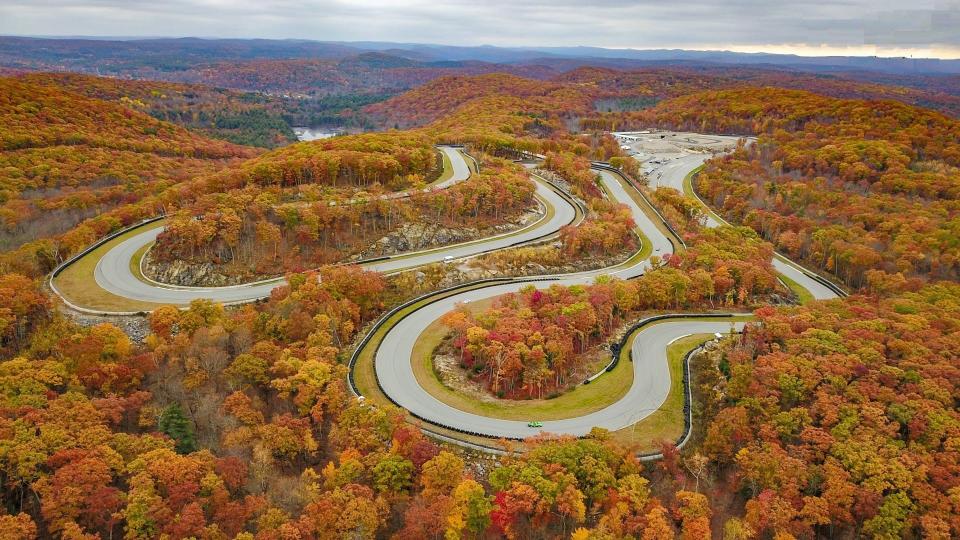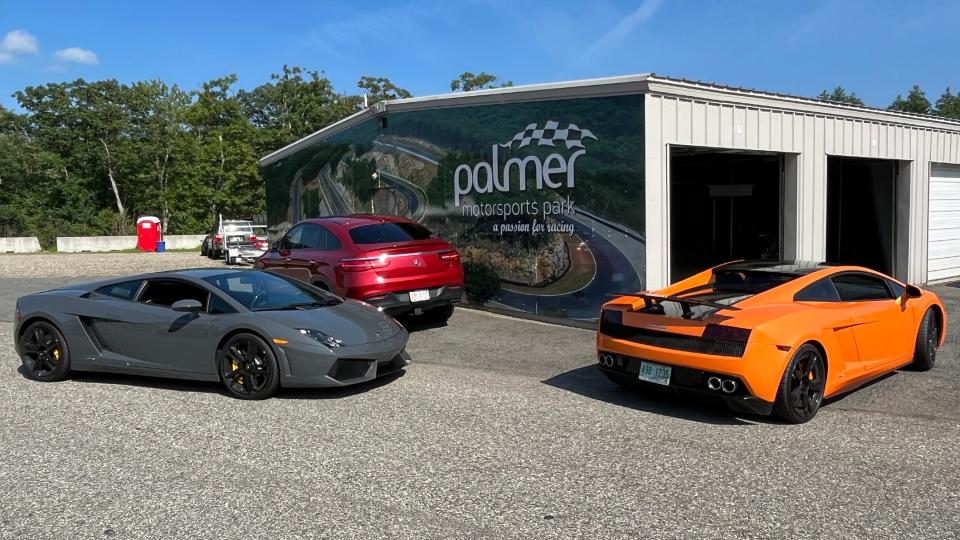Why High-Performance Driver’s Ed Is a Perfect Father-Son Weekend

The Northeast is not the easiest place to be a car enthusiast. Road salt and rust shorten the driving season and lengthen wrenching sessions. But my home state of Massachusetts does have its own outstanding beacons of car culture—some of my favorites are a tenacious defense of the Right to Repair, and a magical place called Palmer Motorsports Park.
You won’t find towering grandstands, luxury spectator boxes, or overpriced hot dogs at PMP. This is a place for drivers, learners, tuners, and competitors to hone their car control skills at speed in the relative safety of a well-managed private track.

The track at Palmer is a wildly scribbled line drawn on Whiskey Hill Mountain, in a leafy region of western New England known as the Pioneer Valley. It crams 14 turns and 509 feet of elevation changes into a snaking 2.3-mile lap which makes for an extremely engaging drive whether you’re in a Miata, a McLaren, or a fully built track-only race car. Lapping days can be done in either direction for an entirely different experience.
This summer, my dad and I rented a couple of track cars and time with instructors to get as much as we could out of a day at Palmer. Not only was it a great bonding experience, but I left feeling a heck of a lot happier with my driving skills than I had been the day before.
Father and Son Connected by Cars

My father Clayton turned 60 this year. He’s not as tragically obsessed with cars as I am, but I blame him for getting me into the hobby. Some of my oldest memories are of dad coming home from work with a Hot Wheels toy in his pocket—basically, a little Pavlovian training to get me excited about his nightly return from an office in Boston. It pretty much worked. He and I have had many adventures, and I’ve been collecting cars of all sizes since those days.
I feel lucky to say we had quite a few “dad teaches son” moments over the years, doing stuff like fishing, camping, and skiing together when I was a sprout. For his milestone birthday, I wanted to flip the script a little bit and bring him into my world—deep car nerdery and pushing the limits of vehicles. Casual research revealed that Palmer Motorsports Park was conveniently located almost exactly between my parents’ place on the Massachusetts North Shore and mine in New York’s Hudson Valley. After a deeper dive, I learned that Palmer is not just in my backyard, it’s a world-class track that quite a few of my car-biz colleagues had been impressed by.

When I realized they were running a High-Performance Driver Education class on the exact day my dad would mark 60 years, I made some reservations and started the calendar countdown.
HPDE, Track Day, or Racing School?
Many tracks that host open-to-the-public days, Palmer included, offer different types of experiences to attending drivers. If you can prove competence and simply want to set lap times, there are open-lapping sessions generally divided into at least two (fast and less-fast) groups. For those who want to get serious about competition and learn the art of racecraft (passing, tire management, race strategy) there are race schools. But the most broadly beneficial type of track day, in my opinion, is HPDE.

Palmer’s one-day HPDE is a mix of classroom time and on-track time, giving you the opportunity to think about high-performance driving from both conceptual and practical perspectives. In the air-conditioned classroom, we learned about things like the meaning of flags, track etiquette, what to expect when a car feels a certain way, and critically, the layout of the track. Once we were behind the wheel, pro coaches we each had to ourselves for every session helped us apply what we’d learned while supplementing it with real-time tips.

Sessions alternated: Class, track, class, track, lunch, track, break, and then one more session on the track. I loved this format because it provided the opportunity to ask deeper questions about the drive after laps, and also hear the answer to other students’ queries.
HPDE Is Not Just for New Drivers
This job has allowed me to drive a range of extreme cars on some spectacular roads and race tracks around the world. But while I’m comfortable evaluating vehicles and staying safe at a decent clip, I’ve always wanted to take a full day to sit down with a true pro and focus solely on my own driving skills at pace. Meanwhile, my dad’s a casual car appreciator who simply likes to try new things. We’ve both been driving, largely crash and ticket-free, for many years. He and I were able to take the same HPDE class, get very different experiences out of it, and both have a great time.

For him, it was a fun opportunity to feel what it’s like to run a real track car at speed and learn a bit about the physics of track driving. For me, it was a fresh baseline on my journey to becoming a better high-performance driver, getting more comfortable on track, and being able to extract every ounce of excitement from my own cars and the ones I review.
A Few Laps To Learn the Track, but Mastery Would Take Years
After watching a few full laps on video in the classroom—and on YouTube the night before we showed up—I had minimal confidence in my ability to memorize all 14 turns in a day. Not only are there a lot of corners at Whiskey Hill, but quite a few are basically blind and require real commitment to get around quickly.
My first couple of laps were particularly nerve-wracking, but by the start of my second session, I had the course map pretty well ingrained. My dad disagreed, “is it considered a 'senior moment' when you have to ask the instructor for directions around the track,” he later said with a laugh. Regardless, knowing if a turn goes right or left is one thing. Knowing the optimal line and throttle and brake applications is completely different. And that’s why it’s worth paying an instructor and paying close attention to them on your first time out at a track like this.

 Yahoo Autos
Yahoo Autos 